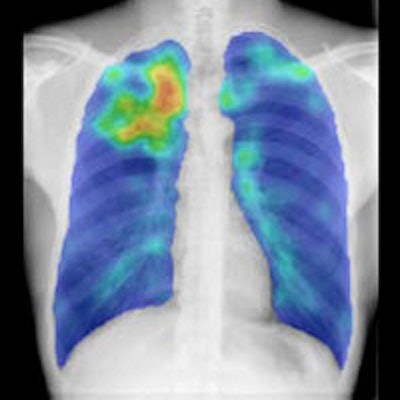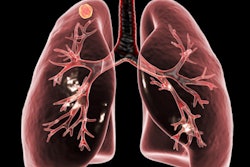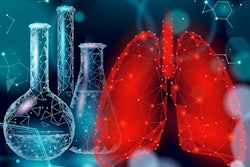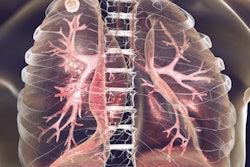
A computer-aided detection (CAD) software application developed with deep-learning technology can detect tuberculosis (TB) on chest radiographs at a comparable level to human experts, according to research published online on 26 March in Scientific Reports.
A multinational team of researchers assessed the performance of version 6 of the CAD4TB software platform on an independent dataset of over 5,000 chest x-ray images. They also compared the performance of the software on a subset of cases that were reviewed independently by five observers.
CAD4TB v6 outperformed all previous versions of the software and did not differ significantly in performance when compared with the reference standard of radiologist interpretation, according to the researchers.
"Used as a prescreening system in regions where TB is endemic, CAD4TB allows for testing of much larger numbers of subjects at a fraction of the cost," wrote the authors, led by Keelin Murphy, PhD, and Bram van Ginneken, PhD, of Radboud University Medical Center.
Developed by Radboud, CAD4TB is distributed by Delft Imaging Systems and has been used in numerous settings around the world, according to the researchers. CAD4TB v6 is the first version of the software to employ deep learning. It can analyze a chest radiograph in less than 15 seconds, according to the researchers.
Seeking to evaluate CAD4TB's performance on an independent dataset, the researchers acquired chest x-rays and Xpert sputum test results for 5,565 subjects at two TB diagnosis and treatment centers in Karachi, Pakistan. All participants had been evaluated for presumptive TB.
After the algorithm was applied to the entire dataset, the researchers also compared its performance on a subset of 500 scans -- 250 positive and 250 negative on Xpert tests -- with that of independent interpretations by five human observers.
These observers included the following: a radiologist with special interest in chest radiology and more than 30 years of experience working in the Netherlands, a public health TB doctor in the Netherlands with 25 years of experience reading chest x-rays, a radiologist working as a consultant in chest radiology for a network of private TB diagnostic and treatment facilities in Pakistan, a radiologist with specialty in chest radiology and four years of experience working in the Netherlands, and an x-ray technician working at one of the health centers in Pakistan.
In comparison with the consensus radiological reference standard, CAD4TB v6 achieved 98% specificity at a 90% sensitivity level -- outperforming previous versions by a considerable margin, according to the researchers. In addition, the authors did not find any substantial differences in performance between CAD4TB v6 and any of the expert observers -- not including the x-ray technician -- in comparison with the Xpert reference standard.
"From these results it is clear that at the most relevant, high sensitivity levels, the performance of CAD4TB version 6 is similar to that of human experts," they wrote.
The researchers also performed cost-effectiveness analysis and determined that the algorithm, when operating at a 90% sensitivity, can process 132 subjects per day at an average cost of $5.95 per subject.
Editor's note: The image on the home page that introduces this topic shows that the application of energy normalization improved CAD's ability to distinguish normal from abnormal chest radiographs. It was courtesy of Dr. Rick Philipsen from Radboud University Medical Center.



















